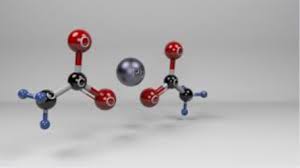Table of Contents
Introduction to Acetatas
For accurate reasons, acetates take pictures and pay attention to them throughout numerous fields. These flexible compounds have a fantastic potential to conform and evolve, making them crucial in numerous programs. From business techniques to normal products, acetates play an important position that frequently goes unnoticed. As we delve deeper into the sector of acetates, you’ll discover their fascinating history, contemporary uses, and promising future improvements. Whether you’re a curious learner or a seasoned expert in the industry, there may be plenty to discover about these dynamic substances that maintain and shape our lives. Let’s embark on this journey together!
History and Evolution of Acetatas

Acetatas, or acetates, have roots tracing lower back to the early days of organic chemistry. Their discovery marked a giant milestone in information about carboxylic acid derivatives.
In the late 18th century, researchers began isolating those compounds from herbal assets. Early examples blanketed vinegar’s important thing—acetic acid. This simple molecule paved the way for the growth of numerous acetate salts and esters.
As scientific strategies became superior, so did our capacity to synthesize acetates in laboratories. The 19th century saw expanded business hobbies as chemists recognized their potential applications throughout more than one field.
Fast forward to today, and these flexible compounds are vital in the textiles and meal protection industries. Each decade delivered improvements that multiplied their use, demonstrating their adaptability and significance via time.
Current Uses and Applications
Acetatas, or acetate compounds, are crucial in diverse industries these days. Their versatility permits them to be applied in merchandise, from textiles to food.
The fabric industry favours acetates for their silk-like end and breathability. They beautify fabric used in apparel and upholstery, supplying introduced consolation and aesthetic enchantment.
The meals region also has considerable blessings from acetatas. They serve as flavouring marketers and preservatives. Their capacity to preserve freshness makes them essential components in many processed ingredients.
Pharmaceuticals rely upon acetates for drug methods and delivery systems. These compounds help enhance the solubility and bioavailability of medications.
Furthermore, acetatas find applications in manufacturing plastics and coatings. As a result, they contribute to manufacturing long-lasting goods that are used to be visually appealing.
Potential Advancements in the Field
The future of acetates is brimming with ability improvements. Researchers are exploring new synthesis techniques to decorate efficiency and decrease environmental effects. This presents an opportunity to broaden extra sustainable practices in production.
Moreover, biochemistry improvements can also permit the introduction of biodegradable acetates. Such substances align nicely with international sustainability dreams while meeting purchaser calls for green products.
Another region ripe for exploration is the incorporation of nanotechnology. By integrating nanoscale substances into acetate compounds, houses like electricity and thermal stability can significantly progress.
Collaboration between academia and industry is critical here. Joint ventures can foster groundbreaking discoveries that push the bounds of what acetates can attain through diverse applications.
As we appear ahead, those advancements preserve promise for medical groups and industries keen to embody modern-day substances that meet evolving wishes.
Acetatas in Technology
Acetatas play a pivotal function in various technological packages. Their versatility makes them valuable in several sectors, mainly electronics.
One awesome use is inside the manufacturing of conductive inks for revealed circuits. These acetates enhance electric conductivity while retaining flexibility. This aggregate opens doorways to revolutionary designs that conventional materials cannot gain.
Moreover, acetatas are crucial in developing bio-sensors and diagnostic equipment. Their biocompatibility allows for seamless integration with residing structures, leading to advancements in the scientific era.
In renewable strength, acetate-based materials are being explored for green energy garage answers. As researchers delve deeper into their capability, we may see good-sized breakthroughs that could reshape present-day technology.
The ongoing exploration of acetates signifies a thrilling frontier where technology meets sensible software. Industries will probably continue to innovate around these compounds as demand increases for smarter-era solutions.
Impact on Various Industries
Acetatas are making waves throughout multiple industries, revolutionizing how companies function. They function as a biodegradable opportunity for standard fibres in the fabric zone. This shift no longer meets customer demand for sustainable merchandise but also reduces environmental impact.
The food and beverage enterprise has advantages from acetates as well. They act as preservatives and flavouring agents, improving flavour whilst extending shelf existence without compromising pleasant.
In prescribed drugs, acetates are gaining traction in drug formulation. Their particular residences permit the progressed solubility and bioavailability of medicines.
Moreover, the automobile enterprise is exploring its use of lightweight substances. This innovation can make contributions significantly to gasoline efficiency and reduce emissions.
From packaging solutions to scientific devices, acetates illustrate versatility that aligns with modern-day sustainability goals. As these packages amplify, the ability to increase remains giant across exceptional sectors.
Future Predictions and Opportunities
The future of acetates is brimming with potential. As studies reveal vulnerabilities, we may see elevated packages in numerous sectors.
Biodegradable plastics made from acetates should revolutionize environmental sustainability. These substances offer promising alternatives that appreciably lessen plastic waste.
In prescribed drugs, novel drug transport systems using acetates are on the horizon. Their ability to encapsulate and release remedies effectively opens new avenues for targeted treatment plans.
Moreover, improvements in nanotechnology may cause progressive uses of electronics and strength storage. Acetatas may want to play a critical function in growing smarter batteries or bendy gadgets.
Excitingly, collaborations among industries may foster breakthroughs formerly unimagined. The intersection of chemistry with fields like agriculture and textiles suggests outstanding promise for unique merchandise beautifying great and overall performance.
With ongoing investment into studies and development, the possibilities within this realm are significant, inviting innovators to explore what lies beforehand.
Conclusion
Acetatas are carving out a thrilling niche in various fields, paving the manner for revolutionary packages. Their records indicate an exquisite evolution from easy chemical substances to multifunctional materials that affect many industries today.
The contemporary landscape reveals acetates being applied in several approaches, from meal upkeep to pharmaceuticals. They have emerged as vital components for enhancing product fine and toughness. With ongoing research and improvement, we can anticipate improvements to enlarge their application.
Technology is already profiting from acetates through additive production and sustainable cloth solutions. This opens the door to novel merchandise across the packaging, textiles, and electronics sectors.
As industries continue to explore those opportunities, the potential for acetates seems boundless. Predictions indicate a surge in demand driven by sustainability efforts and technological innovations. Opportunities are ripe for corporations willing to conform or innovate with this flexible compound.
Embracing the destiny of acetates might also lead us toward more efficient processes and green options that align with cutting-edge values of sustainability. The adventure ahead promises no longer the best increase but also transformative adjustments impacting normal lifestyles undoubtedly.
FAQs:
What are Acetatas?
Acetatas are versatile compounds used in industries like textiles, food, and technology for their adaptable properties.
How are Acetatas used in textiles?
Acetatas are valued for their silk-like finish and breathability, enhancing fabric quality in clothing and upholstery.
Can Acetatas improve food preservation?
Yes, Acetatas act as preservatives and flavouring agents, extending the shelf life of processed foods.
Are Acetatas sustainable?
Researchers are developing biodegradable Acetatas to align with global sustainability goals.
How do Acetatas benefit the pharmaceutical industry?
Acetatas improve drug solubility and bioavailability, playing a key role in superior drug formulations.
What role does Acetatas play in technology?
Acetatas are utilized in conductive inks and biosensors, contributing to advancements in electronics and diagnostics.
Can Acetatas help reduce plastic waste?
Biodegradable Acetatas are being explored as green alternatives to traditional plastics.
